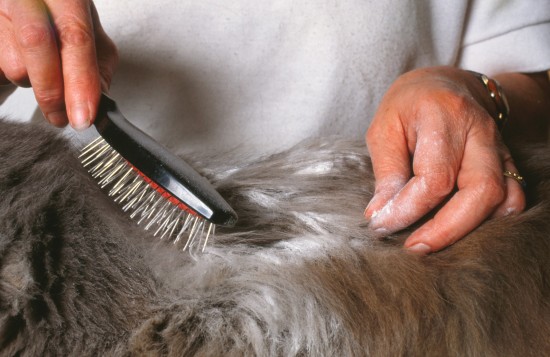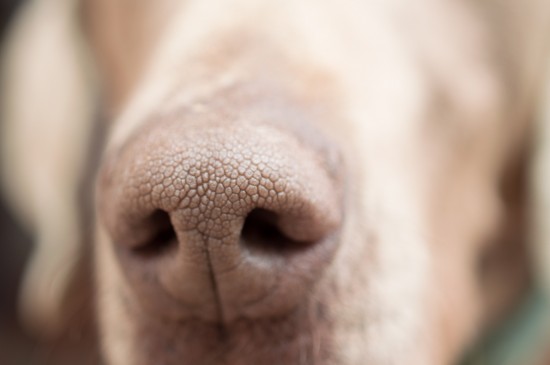
The very name ‘ringworm’ is somewhat misleading, as the condition known as ringworm, which can occur in dogs, cats, horses, other mammals and even humans, is not actually a worm at all.- something which many pet owners are unaware of.
Ringworm is actually a skin condition caused by a parasitic fungus, and is highly contagious. Ringworm is a zoonotic condition- one that can be passed back and forth between humans and animals. Understandably, this is cause for concern, particularly as ringworm is relatively easy to catch, and can be difficult to fully eradicate. If you keep pets, it is important to gain a basic understanding of ringworm, learn how to identify it, and know how to minimise the chances of contracting it for yourself and your pet- as well as what you can do to treat it if it occurs. Read on to find out more!
Ringworm, or to give it its scientific name, Dermatophytosis, is a fungal infection that lives on keratin, a protein present in the skin, fingernails and hair of both pets and people. It lives on the surface of the skin, and sometimes around or just below the surface level of the hair or fur. It survives most easily in warm and slightly moist conditions, and so the skin is the perfect host, providing the optimum living conditions for the fungus and a constant source of food. Ringworm is defined as an infectious skin condition rather than a worm infestation, and is a ‘worm’ in name only!
Ringworm is not an airborne condition, but can be transmitted by various other means. Skin to skin contact with an affected area is the main cause of transmission, but contact with clothes, bedding or other surfaces where pets or people affected live or sleep can also pass on the condition. Fungicidal soaps and washing detergents can help to prevent the spread of ringworm, and kill off any spores. In the case of infection of either a person or a pet, ringworm can easily be transmitted by direct contact with the animal in question, or their things. In any household, if one pet of person contracts ringworm, it is all too easy for the others in the house to inadvertently become infected too.
The good news is, although ringworm can be unsightly, and the idea of having a fungal infection is of course not very nice, ringworm is a mild condition which does not generally lead to any complications or more serious health conditions. Ringworm can cause hair or fur in the affected area to fall out, and can be itchy, all of which makes it rather unpleasant- but not dangerous per se.
It is generally fairly easy to visually identify ringworm, although it can sometimes be confused with other skin conditions which are similar in appearance, in which case your vet or doctor might perform a skin test to confirm diagnosis. The signs and symptoms of ringworm to be on the lookout for include:
Ringworm is relatively simple to treat in itself; but preventing transmission and re-infection can be more of a challenge. Your doctor or vet will generally prescribe a topical fungicidal cream to apply to the affected patches, and explain to you how to avoid re-introducing the condition by means of correct hand washing and cleaning procedures and how to wash clothing or bedding which may be affected. If any of your pets have ringworm, it is also important that you visit a doctor to talk about treating and checking for ringworm in the human members of the family; similarly, if you or one of your children are diagnosed, talk to your vet about ringworm in your pets.
It’s important to remember that while ringworm can be unsightly and should not be left unchecked, and of course, it can easily be passed on to other people and animals, it is not dangerous and is highly unlikely to lead to any other health conditions or complications. Ringworm is a very common condition, so when handling strange animals always be on the lookout for signs of ringworm, and wash your hands thoroughly after handling them before touching any of your own pets.
Teach your children about good health and hygiene practice around animals, such as hand washing and not touching their mouth and face directly after petting an animal. Ringworm isn’t totally preventable- but taking these simple steps can go a long way towards minimising its chances of transmission to you, your family and your pets.
 How To Help Your Senior Dog To Maintain Their Bodyweight
How To Help Your
How To Help Your Senior Dog To Maintain Their Bodyweight
How To Help Your
 Six Top Tips For Fighting Fleas
Six Top Tips For
Six Top Tips For Fighting Fleas
Six Top Tips For
 6 Reasons Why Your Dog May Have A Dry Nose
6 Reasons Why You
6 Reasons Why Your Dog May Have A Dry Nose
6 Reasons Why You
 Where To Take Your Puppy Or Young Dog To Socialise Them
Where To Take You
Where To Take Your Puppy Or Young Dog To Socialise Them
Where To Take You
 Dogs And Snoring - Is It Cause For Concern?
Dogs And Snoring
Dogs And Snoring - Is It Cause For Concern?
Dogs And Snoring
Copyright © 2005-2016 Pet Information All Rights Reserved
Contact us: www162date@outlook.com